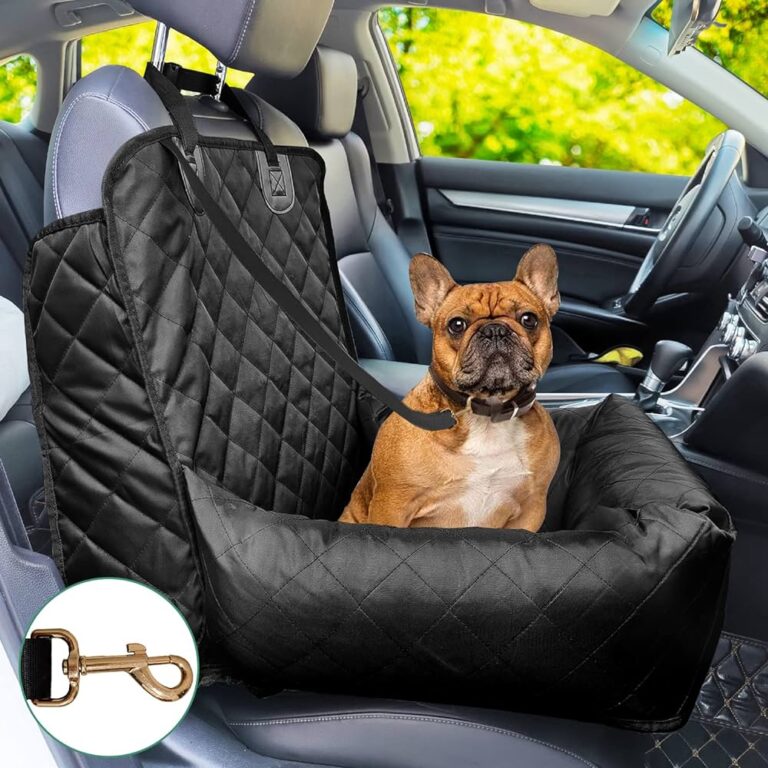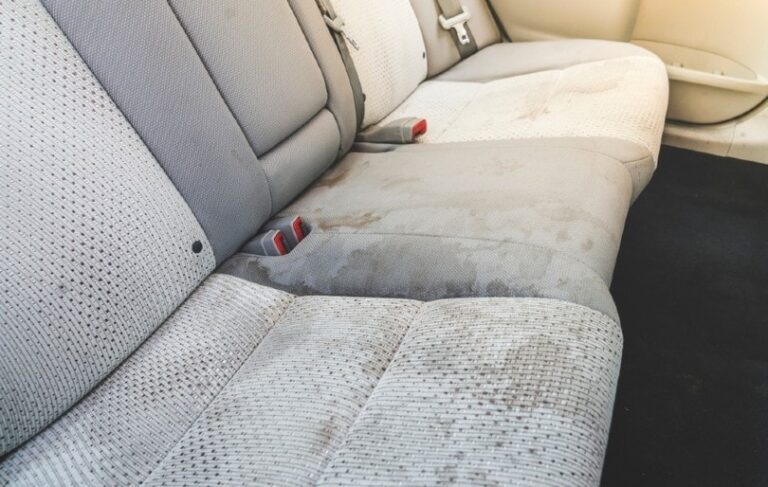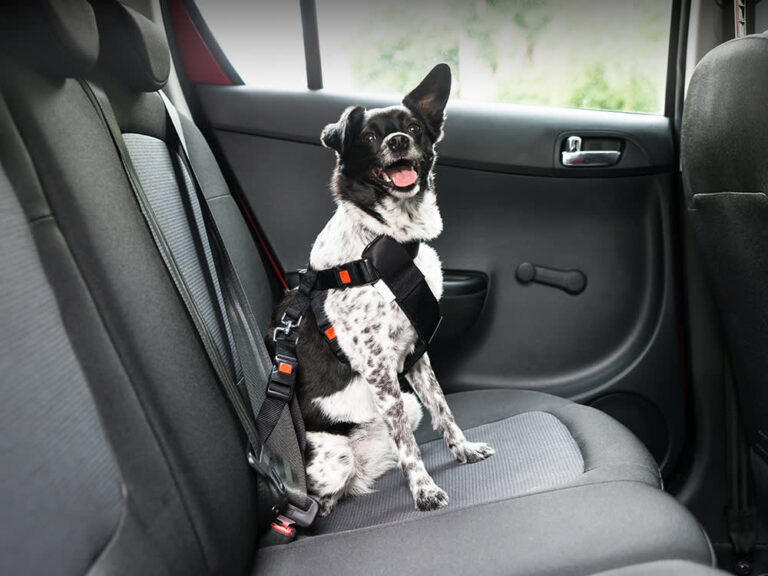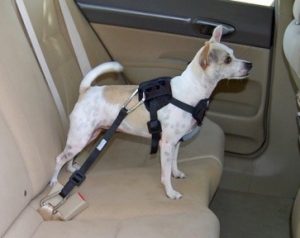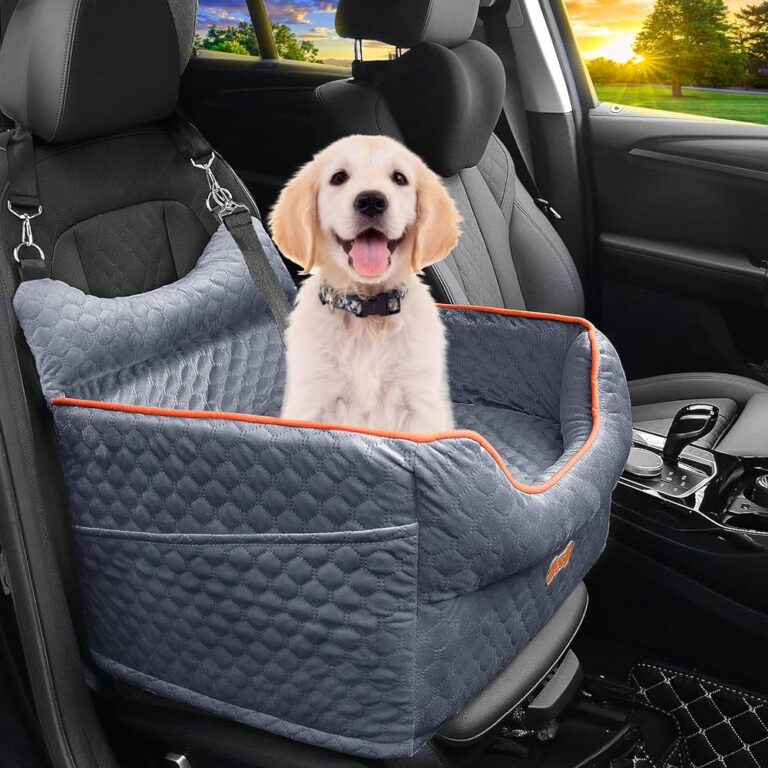Do Dog Seat Belts Work? Ensuring Pet Safety on the Road
Yes, dog seat belts work. They help keep dogs safe during car rides by preventing them from moving around.
Dog seat belts are crucial for pet safety during car travel. They minimize distractions for drivers and prevent dogs from being thrown around in an accident. These seat belts attach to your car’s existing seat belt system or latch system.
They ensure your dog remains secure and protected. Various models and sizes are available to suit different breeds and car types. Investing in a quality dog seat belt can make your trips safer and more comfortable. Secure your furry friend for peace of mind on the road.
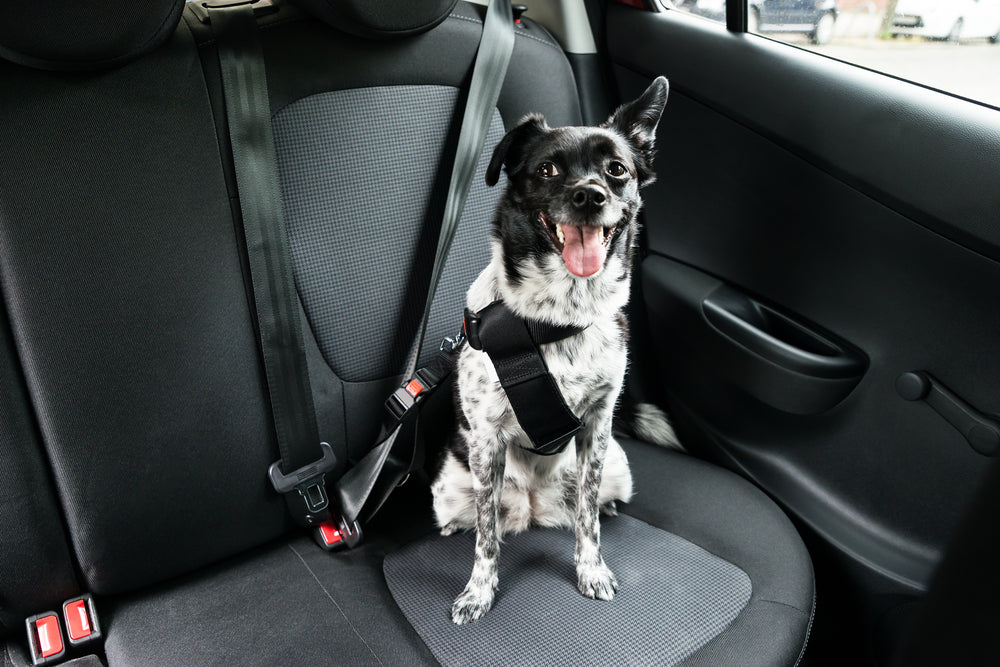
Credit: www.dutch.com
The Need For Dog Seat Belts
Dog seat belts are crucial for the safety of our furry friends. They help keep pets secure during car rides. This reduces the risk of injury in case of an accident. Ensuring pet safety is a priority for many pet owners.
Rising Concerns For Pet Safety
Many pet owners worry about their pets during car trips. Unrestrained pets can distract drivers. This increases the risk of accidents. Pets can also be thrown from the car in a crash. This can lead to severe injuries or even death.
Using a dog seat belt can prevent these issues. It keeps pets secured and reduces distractions. This makes the car ride safer for everyone.
Stats: Pet Injuries In Vehicle Accidents
Statistics show that many pets get injured in car accidents. Here are some facts:
- Over 80% of pet owners travel with their pets.
- Only 16% use proper pet restraints.
- Unrestrained pets are more likely to get injured in a crash.
These numbers highlight the importance of pet seat belts. They can save lives and reduce injuries.
How Dog Seat Belts Function
Dog seat belts are essential for keeping your furry friend safe during car rides. Understanding how they function can help you make an informed decision. Below, we break down the mechanics of dog seat belts into two key aspects: design and materials, and the mechanism of action.
Design And Materials
Dog seat belts are crafted from durable materials like nylon or polyester. These materials are chosen for their strength and durability.
- Nylon is lightweight and robust, making it a popular choice.
- Polyester offers a blend of strength and flexibility.
Most dog seat belts come with metal buckles and hooks. These parts are designed to withstand the force of sudden stops.
Some models include padded harnesses for extra comfort. These harnesses distribute pressure evenly across your dog’s body.
Mechanism Of Action
Dog seat belts function by securing your dog to the car seat. This keeps them from moving freely around the vehicle.
- The seat belt attaches to your dog’s harness.
- It then clicks into the car’s seat belt buckle.
This setup limits movement, reducing the risk of injury during sudden stops or accidents.
The harness itself spreads the force of a sudden stop across the dog’s chest and shoulders. This design minimizes injury.
Some advanced models have a tether system. This system allows some movement while still keeping the dog secure.
Comparing Dog Seat Belts To Traditional Restraints
Dog seat belts are rising in popularity. They offer a safer travel option for pets. But how do they compare to traditional restraints? This section will explore the differences and benefits.
Harnesses Vs. Seat Belts
Dog harnesses and seat belts are both common choices for pet safety in cars. Harnesses secure the dog to a fixed point in the car. They allow more freedom of movement. Seat belts, on the other hand, keep the dog more restrained. They attach directly to the car’s seat belt system.
Below is a comparison table between harnesses and seat belts:
| Feature | Harness | Seat Belt |
|---|---|---|
| Freedom of Movement | High | Low |
| Security | Moderate | High |
| Ease of Use | Easy | Moderate |
| Comfort | High | Moderate |
Limitations Of Crates And Carriers
Crates and carriers have been traditional methods for transporting dogs. They offer their own benefits. But they also come with limitations. One major issue is space. Crates take up much room in the car. This can be inconvenient, especially in smaller vehicles.
Another problem is ventilation. Some crates and carriers lack proper airflow. This can make your dog uncomfortable, especially during long trips. Additionally, crates must be secured properly. If not, they can become a hazard in an accident.
Below are some key limitations of crates and carriers:
- Space-consuming
- Poor ventilation
- Risk of improper securing
Dog seat belts often provide a more practical solution. They offer safety without taking up much space. They also ensure your dog stays comfortable and secure.
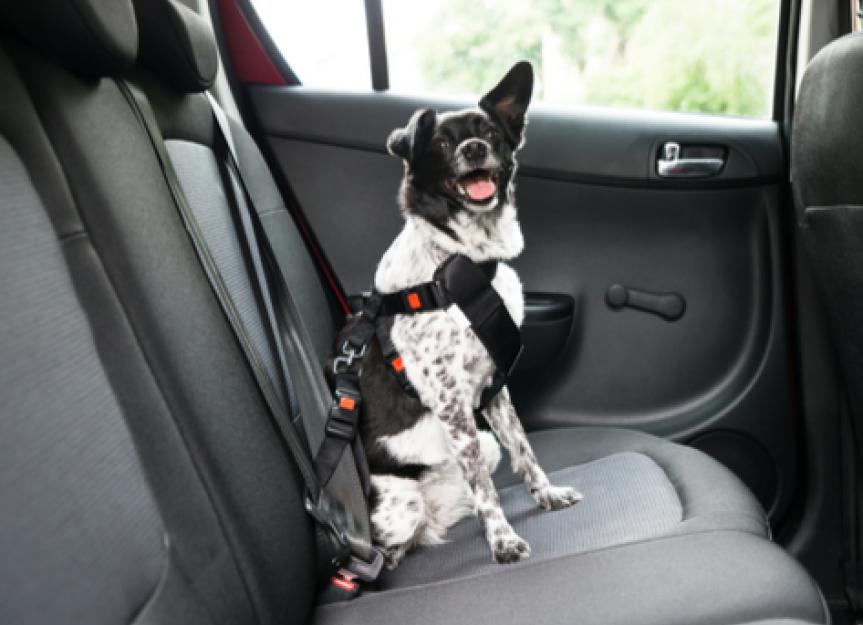
Credit: www.petmd.com
Installation And Use Of Dog Seat Belts
Installing and using dog seat belts properly ensures your pet’s safety during car rides. This section covers a step-by-step guide for installation and common mistakes to avoid.
Step-by-step Guide
Follow these steps to install and use dog seat belts correctly:
- Select a suitable dog seat belt: Choose a belt that fits your dog’s size and weight.
- Attach the belt to your dog’s harness: Avoid connecting it to a collar to prevent neck injuries.
- Find the seat belt slot: Locate the seat belt slot in your car’s back seat.
- Insert the dog seat belt: Insert the seat belt clip into the car’s seat belt slot until it clicks.
- Adjust the strap length: Ensure the strap is short enough to restrict excessive movement but long enough for comfort.
- Secure your dog: Place your dog on the seat and attach the belt to the harness.
Common Mistakes To Avoid
Avoid these common mistakes to ensure your dog’s safety:
- Using a collar instead of a harness: This can cause neck injuries in sudden stops.
- Not adjusting the strap length: A too-long strap can let your dog move too much.
- Incorrectly inserting the belt clip: Ensure the clip clicks into place to avoid detachment.
- Skipping regular checks: Check the belt’s condition regularly for wear and tear.
- Ignoring the dog’s comfort: Ensure your dog is comfortable and not restricted painfully.
Safety Standards And Certifications
Ensuring your dog’s safety during car rides is crucial. Dog seat belts are designed to keep them secure. But, are they reliable? Understanding the safety standards and certifications can help you make an informed choice. This section will delve into the industry regulations and certified products to look for when choosing a dog seat belt.
Industry Regulations
Dog seat belts must meet specific industry regulations to ensure safety. These regulations are set by organizations dedicated to pet safety. They test the seat belts under various conditions to ensure they can withstand impacts.
Some key organizations include:
- Center for Pet Safety (CPS)
- American Pet Products Association (APPA)
The CPS conducts crash tests to certify dog seat belts. Only products that pass these tests receive the CPS certification. This ensures the seat belts are reliable and safe for your pet.
Certified Products
Choosing a certified product ensures you are investing in safety. Certified dog seat belts have undergone rigorous testing. They meet high safety standards set by renowned organizations.
Look for the following certifications:
| Certification | Description |
|---|---|
| CPS Certification | Indicates the product has passed crash tests by the Center for Pet Safety. |
| ISO Certification | Ensures the product adheres to international safety standards. |
Certified products provide peace of mind. They ensure your dog’s safety in the event of an accident. Always check for these certifications before purchasing a dog seat belt.
Real-world Testing And Effectiveness
Dog seat belts promise to keep our furry friends safe during car rides. But do they really work? Real-world testing and effectiveness provide crucial insights. By examining case studies and testimonials, we can understand the true value of dog seat belts.
Case Studies
Several organizations have tested dog seat belts. These tests simulate real-world crash scenarios. The Center for Pet Safety conducted a study. They used dummy dogs to replicate real pets.
| Brand | Test Result | Comments |
|---|---|---|
| Brand A | Passed | Strong harness, good restraint |
| Brand B | Failed | Buckle broke, poor construction |
| Brand C | Passed | Secure fit, durable material |
Results showed that not all seat belts are equal. Brands A and C provided strong protection. Brand B failed under stress. This highlights the need for careful selection.
Testimonials From Pet Owners
Real pet owners share their experiences too. Sarah from New York says, “The seat belt saved my dog’s life in a crash.” Her dog was restrained and safe, even when the car was damaged.
John from California reports, “I use a dog seat belt on every trip. My dog sits comfortably and stays put.” This shows that seat belts also improve comfort, not just safety.
Emma from Texas shares, “I bought Brand C after reading tests. My dog feels secure, and I drive with peace of mind.” Many pet owners echo her sentiments.
- Safety in crashes: Multiple stories confirm dog seat belts save lives.
- Comfort during travel: Dogs stay put and enjoy the ride.
- Peace of mind: Owners feel better knowing their pets are safe.
Dog seat belts are not just a safety feature. They are a tool for a happier, safer journey.
Pros And Cons Of Using Dog Seat Belts
Dog seat belts are becoming more popular among pet owners. They aim to keep dogs safe during car rides. But, do they really work? Let’s explore the pros and cons.
Advantages For Pet And Driver
Using dog seat belts offers many benefits. Here are some:
- Enhanced Safety: Dog seat belts keep pets secure in one place. This reduces the risk of injury during sudden stops.
- Driver Focus: A restrained dog is less likely to distract the driver. This leads to safer driving conditions.
- Prevents Escape: Dogs cannot jump out of open windows or run away. This gives peace of mind to pet owners.
Potential Drawbacks
Despite the benefits, dog seat belts have some drawbacks. Let’s take a look:
| Drawback | Explanation |
|---|---|
| Comfort Issues | Some dogs may find seat belts uncomfortable. It can take time for them to adjust. |
| Incorrect Usage | Improperly used seat belts can cause harm. It’s crucial to follow instructions carefully. |
| Limited Movement | Dogs may not like being restricted. They might become anxious or stressed. |
Weighing the pros and cons helps in making an informed decision. Consider what works best for both you and your pet.
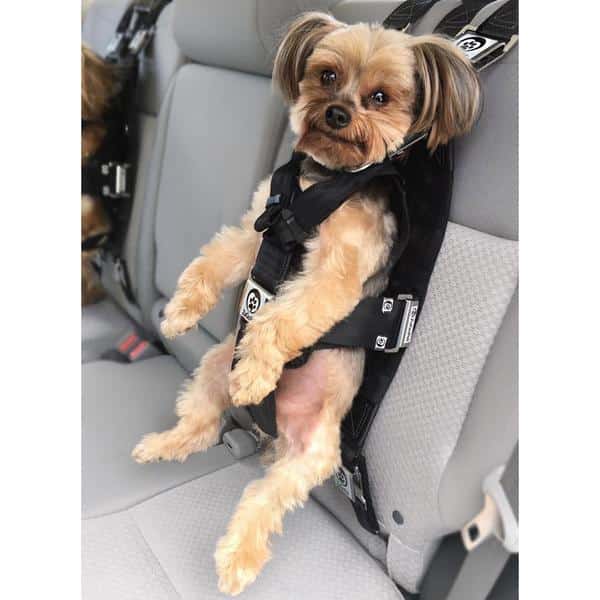
Credit: www.rover.com
Choosing The Right Dog Seat Belt
Choosing the right dog seat belt can be challenging. With many options available, it’s essential to find the best fit for your furry friend. This section will help you navigate the choices and ensure your pet’s safety.
Size And Breed Considerations
One crucial factor is the size and breed of your dog. Different breeds have unique body structures and sizes, affecting the seat belt’s fit and effectiveness. Here are some tips:
- Measure your dog’s chest and neck circumference.
- Consider your dog’s weight. Small dogs need lighter belts, while large breeds need stronger ones.
- Choose adjustable seat belts for growing puppies.
Make sure to check the manufacturer’s size chart. This ensures a snug and secure fit for your dog.
Top Brands And Models
Not all dog seat belts are created equal. Some brands stand out for their quality and reliability. Here are some top brands and models to consider:
| Brand | Model | Features |
|---|---|---|
| Kurgo | Kurgo Tru-Fit | Adjustable, crash-tested, steel buckle system |
| Sleepypod | Sleepypod Clickit | Certified by CPS, shock-absorbing sleeves |
| Blueberry Pet | Blueberry Pet Safety Belt | Durable, comes in various colors, easy to use |
These brands are known for their durability and ease of use. They provide an extra layer of safety for your dog during car rides.
In summary, choosing the right dog seat belt involves considering your dog’s size and breed and selecting a reputable brand. This ensures your pet’s safety and comfort while traveling.
Legal Implications And Responsibilities
Understanding the legal implications and responsibilities of using dog seat belts is crucial for pet owners. It ensures not only the safety of your furry friends but also compliance with state laws and regulations. This section explores the legal aspects of using dog seat belts, focusing on state laws and liabilities in accidents.
State Laws On Pet Restraints
State laws regarding pet restraints in vehicles vary significantly. Some states have strict regulations, while others offer guidelines. Below is a table summarizing the pet restraint laws in various states:
| State | Law/Guideline |
|---|---|
| California | Pets must be restrained in a moving vehicle. |
| New Jersey | Pets must be restrained or face fines. |
| Maine | Pets must not be in the driver’s lap. |
| Hawaii | Pets must not be on the driver’s lap. |
Ensuring your pet is restrained according to your state’s laws is crucial. It can prevent fines and promote safety for everyone in the vehicle.
Liability In Accidents
Liability in accidents involving unrestrained pets can be a complex issue. Unrestrained pets can cause distractions, leading to accidents. In such cases, the pet owner may be held liable. Insurance claims may also be affected if a pet is found to be unrestrained at the time of an accident.
Unrestrained pets can cause injuries to themselves and others in an accident. This can lead to additional medical expenses. Properly restraining your pet with a dog seat belt can reduce these risks. It can ensure that your pet’s safety is not compromised.
In some cases, unrestrained pets may lead to increased insurance premiums. This is due to the higher risk they pose. Using a dog seat belt can help mitigate these risks and potential financial burdens.
Additional Safety Tips For Traveling With Pets
Traveling with pets can be a fun adventure, but safety must come first. Besides using a dog seat belt, follow these additional safety tips to ensure a safe journey for your furry friend.
Temperature Control
Keep the car temperature comfortable for your pet. Dogs can get hot or cold quickly. Use the air conditioning or heater as needed. Never leave your pet alone in the car. The temperature inside a parked car can rise or fall rapidly. This can lead to heatstroke or hypothermia.
| Temperature | Action |
|---|---|
| Hot Weather | Use AC, provide water |
| Cold Weather | Use heater, bring a blanket |
Emergency Kits For Pets
Prepare an emergency kit for your pet. This kit should include items like:
- Water and a bowl
- Food and treats
- First aid supplies
- Medications
- Waste bags
- Comfort items like a toy or blanket
Having these items on hand can help in case of an emergency. Always know where the nearest vet is located.
Frequently Asked Questions
Do Dog Seat Belts Actually Help?
Yes, dog seat belts help. They prevent injuries during accidents and sudden stops. They also keep dogs from distracting drivers.
What Is The Safest Restraint For A Dog In A Car?
The safest restraint for a dog in a car is a crash-tested harness or a secured crate. Both options prevent injuries during sudden stops.
What Is The Safest Way For A Dog To Travel In A Car?
Use a crash-tested dog harness, carrier, or crate. Secure it to the car seat or cargo area. Avoid letting dogs roam freely. Ensure proper ventilation and frequent breaks.
What States Require Dog Seat Belts?
New Jersey and Rhode Island require dog seat belts. Other states recommend them for safety but don’t mandate. Always check local laws.
Conclusion
Dog seat belts are essential for pet safety during car rides. They prevent injuries and ensure secure travel. Investing in a reliable dog seat belt can provide peace of mind. Prioritize your pet’s safety and choose a high-quality option. Safe travels with your furry friend are now within reach!
- Can I Get in a Taxi Without a Car Seat? - January 26, 2025
- Can I Get Chlamydia From a Toilet Seat? - January 26, 2025
- Can I Get an Uber With a Car Seat? - January 26, 2025

